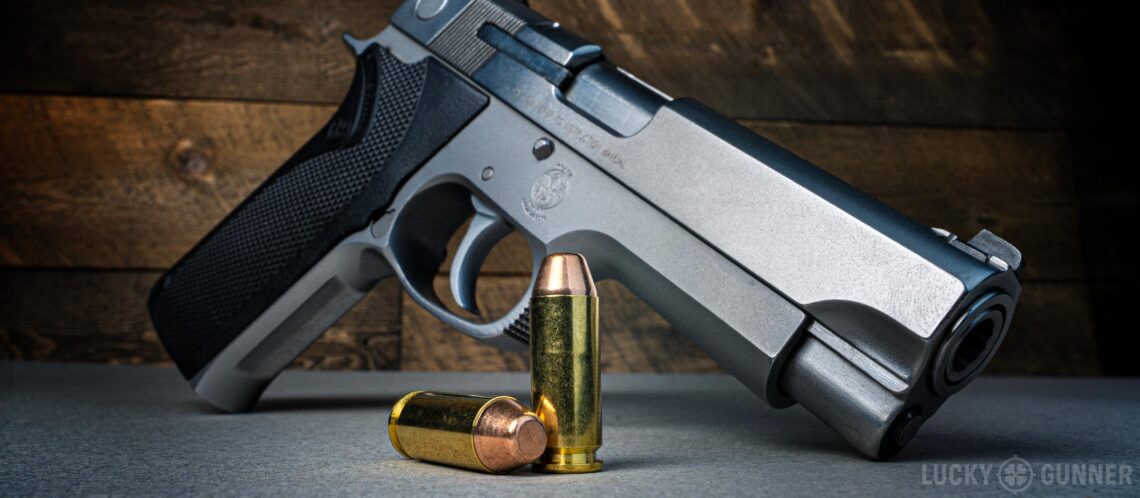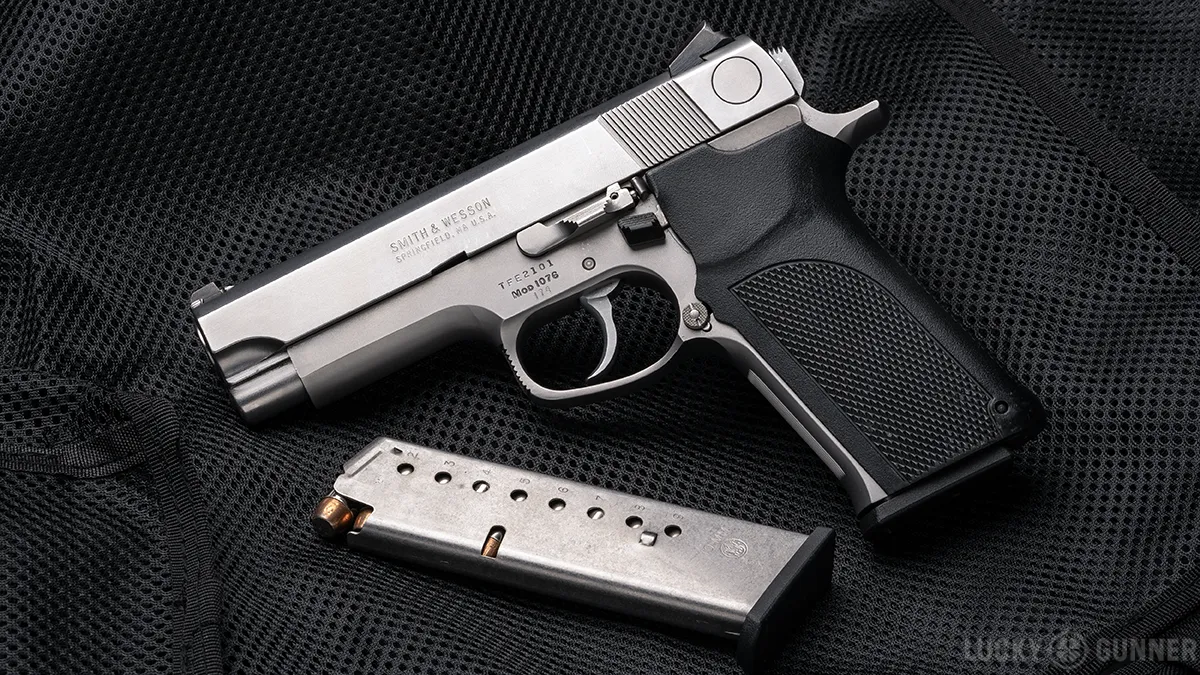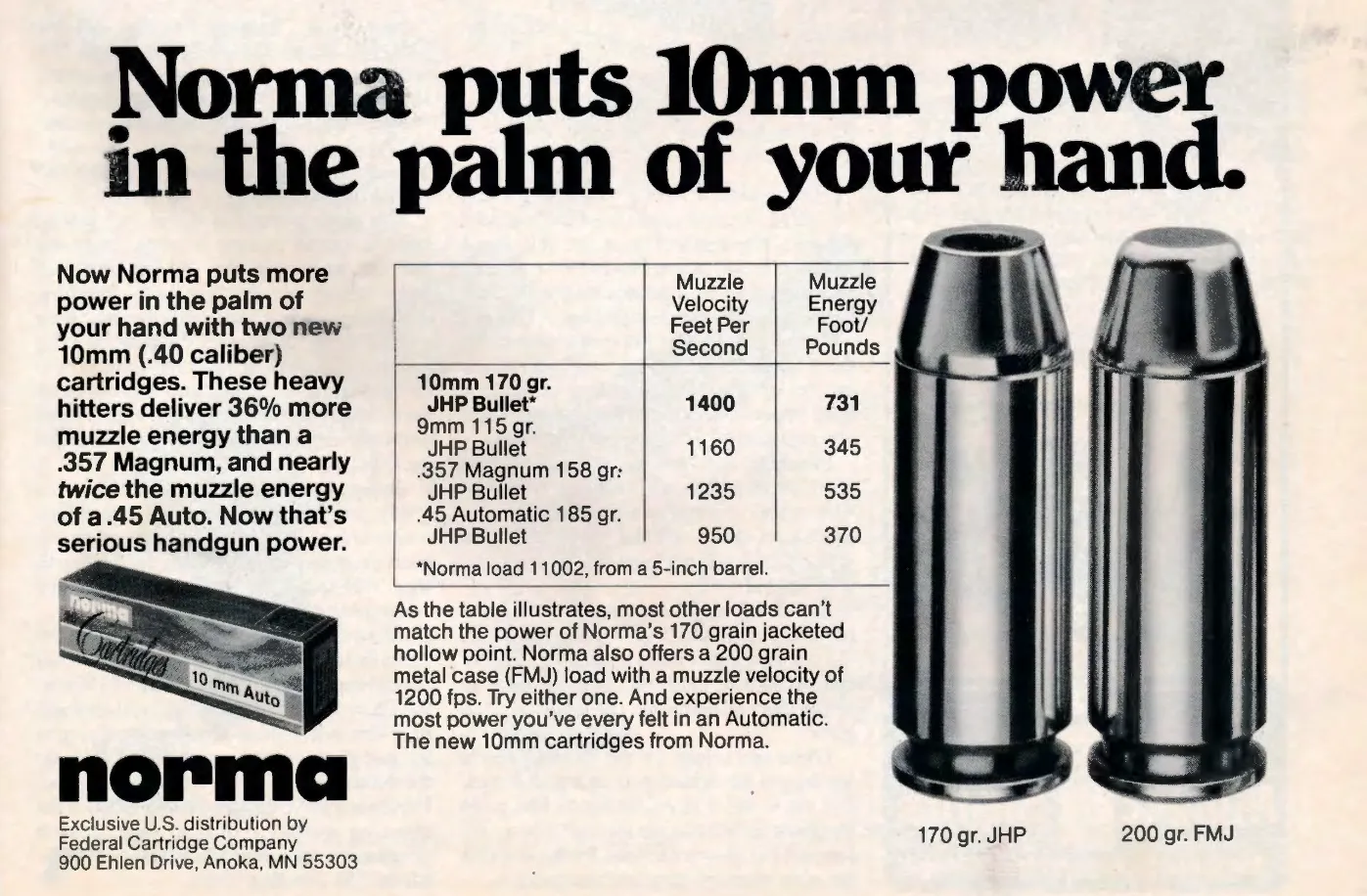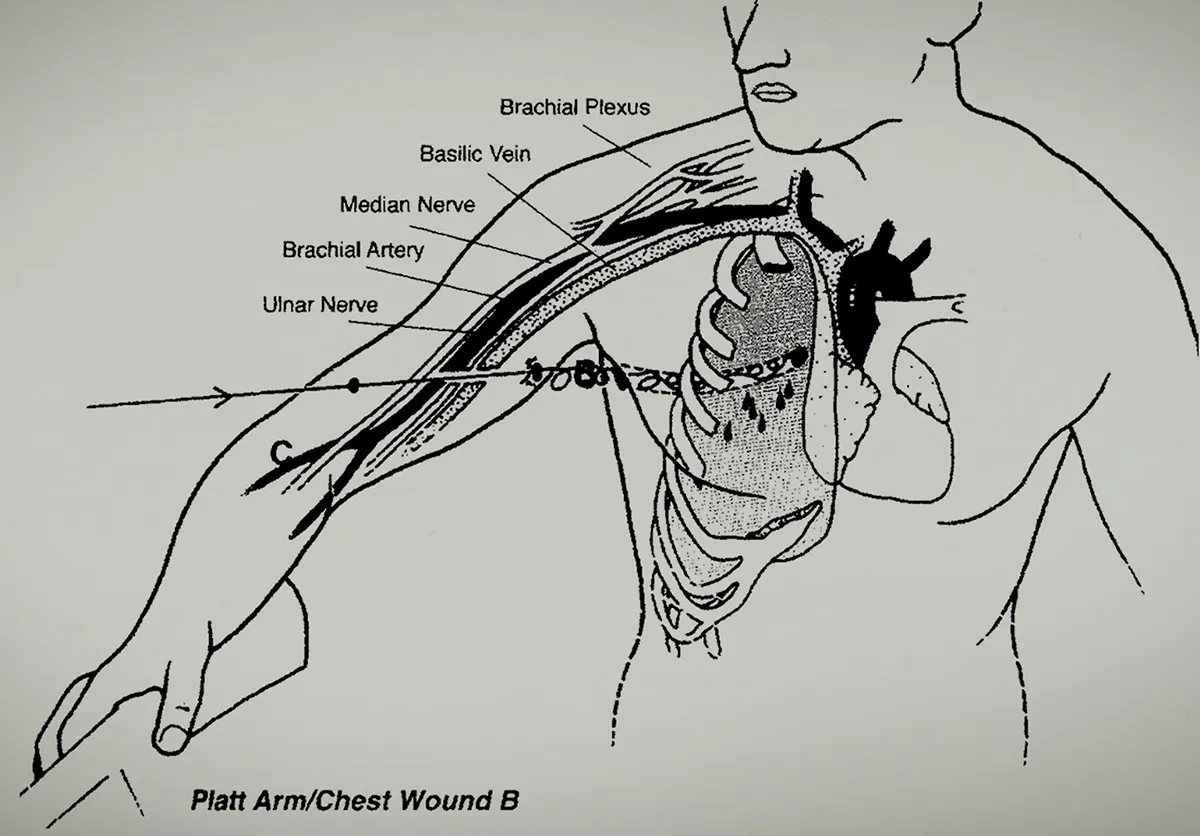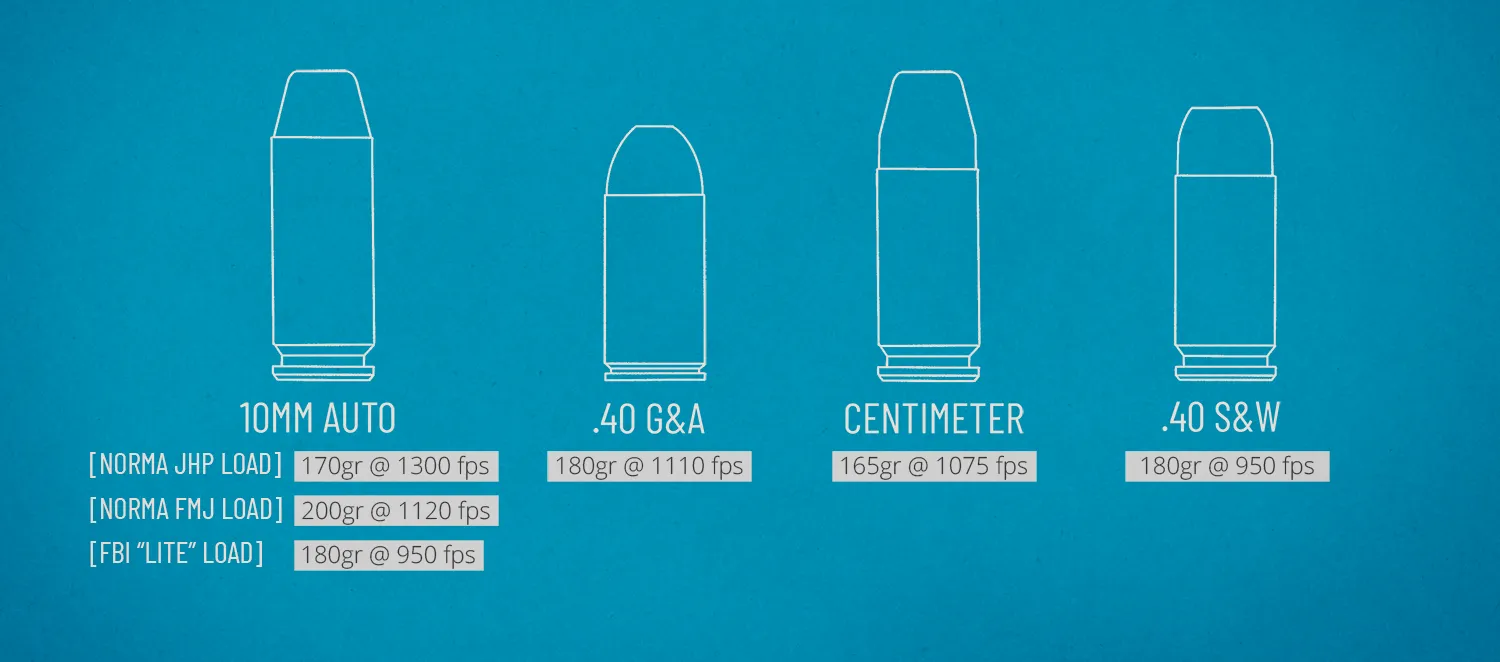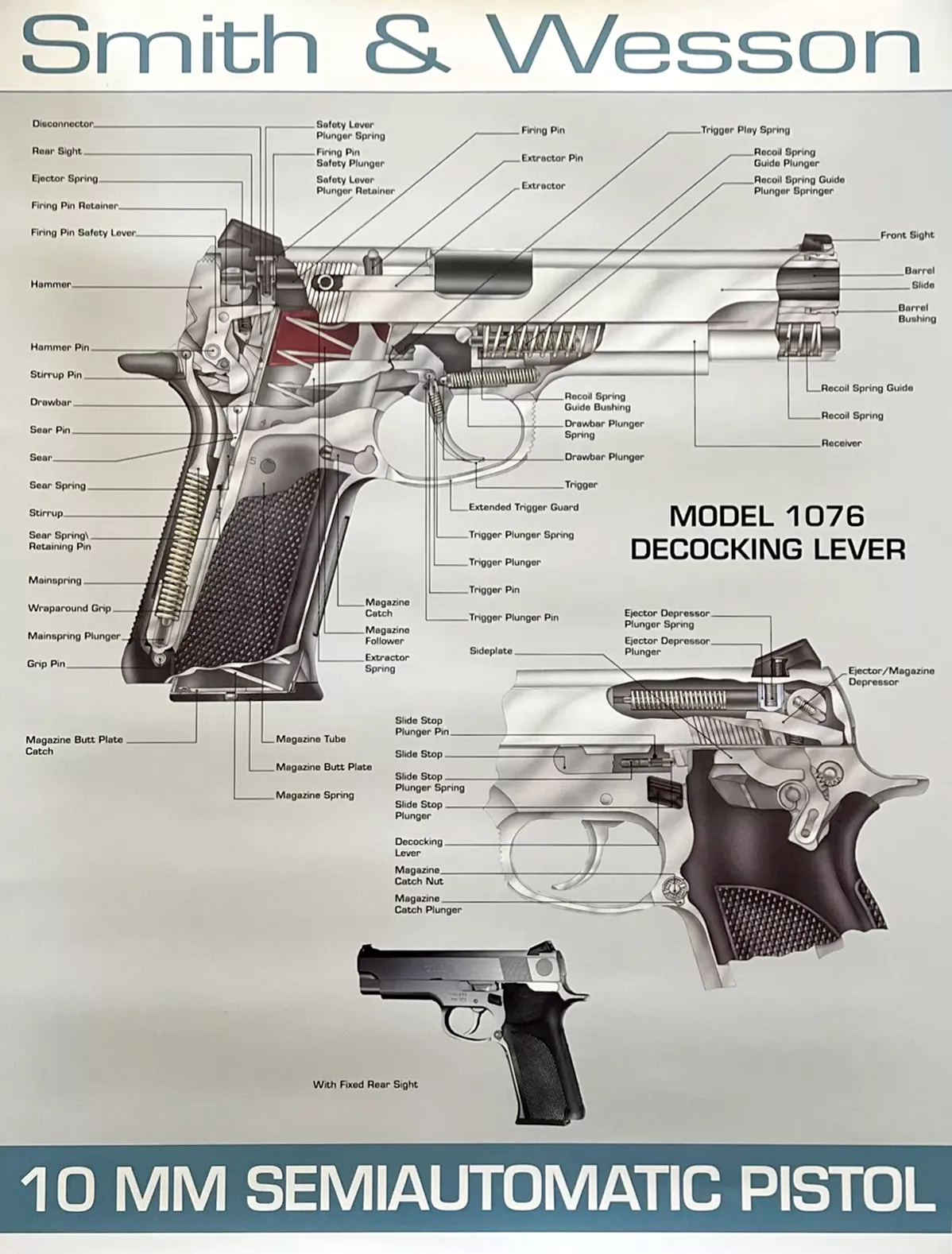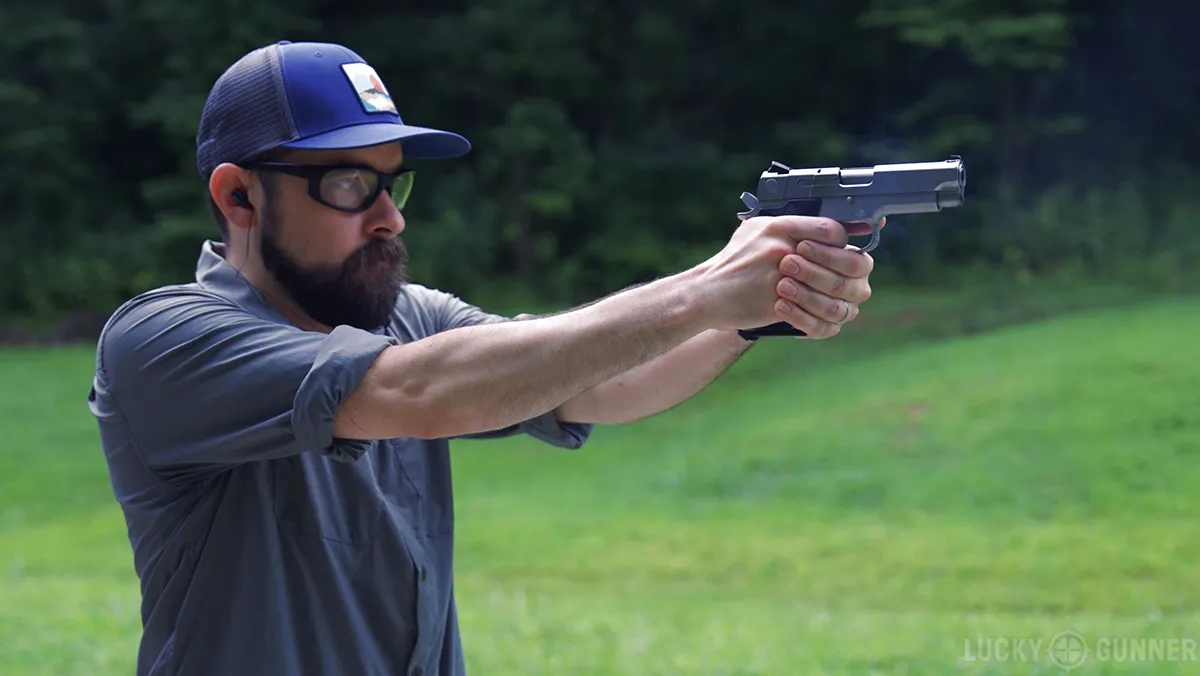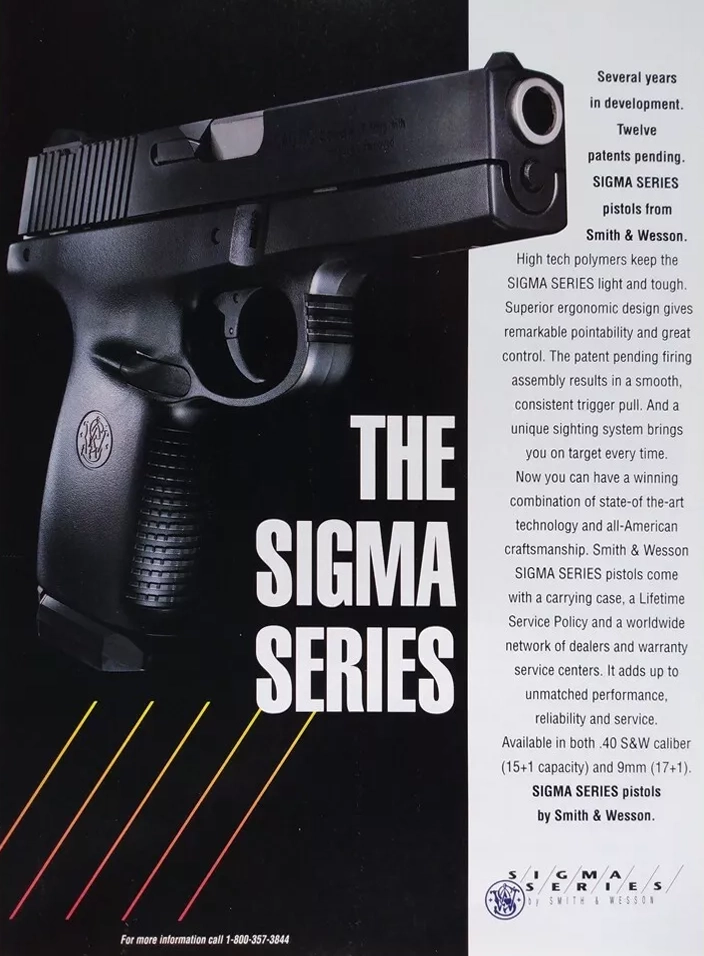The FBI’s adoption of 10mm Auto in 1990 was supposed to be a revolutionary leap forward for law enforcement. It wasn’t. Today, we’re walking through the factors leading up to the FBI’s infamous decision and why they quickly ditched 10mm in favor of .40 S&W. Find out what went wrong, and the parts played by Smith & Wesson and Gaston Glock.
This one is a little longer than normal, and it also took longer to put together than normal. We were going for more of a documentary style, and a lot of effort went into the research, fact checking, and editing. We hope it was worth the wait!
Details are in the video below, or you can scroll on down and read the full transcript.
In late 1989, the FBI announced a groundbreaking decision: they planned to equip all of their agents with a new cutting-edge handgun cartridge: the 10mm Auto. Just a few months later, they awarded a contract to Smith & Wesson for the Model 1076 pistol to fire this powerful new round.
The announcement promised a new era for police firepower – a solution for any officer who felt outgunned by heavily-armed criminal gangs. Police departments, the media, and gun enthusiasts all had high expectations.
But just three years later, the FBI had abandoned the 10mm Auto and canceled the Smith & Wesson contract with only a fraction of the guns delivered. Four years after that, nearly every FBI agent was issued a .40 caliber Glock, which was the most common law enforcement sidearm in the country for at least two decades.
The official reason for the abrupt change was mechanical defects with the Smith & Wesson pistols. However, the true story is more complex and begins at least a decade before the 10mm cartridge ever existed.
1972: The First Modern .40
In 1972, Whit Collins, an editor for Guns & Ammo, pointed out a significant gap in ammo development for semi-automatic pistols. At the time, the .45 ACP was the reigning champion of self-defense cartridges, with 9mm as a distant second. Collins wondered why no one had developed a cartridge that split the difference. A .40 caliber bullet, halfway between the two, might offer ballistic advantages over both. Attempts had been made in the past, but nothing had ever reached the factory production stage.
Undeterred by the industry’s lack of interest, Collins decided to give it a shot himself with a cartridge he called the .40 G&A. With the help of gunsmith John French, Collins loaded a 180-grain .40 caliber bullet into a cut-down .30 Remington rifle case. They modified a Browning Hi-Power to fire the cartridge, which achieved 1110 feet per second out of the 4.7-inch barrel.
The promising results were published in a two-part series in Guns & Ammo, and then… nothing happened. Despite Collins’ solid idea, the 1970s handgun industry didn’t see a market for a novel new semi-auto cartridge.
1980: Gaston Glock’s Experiment
In 1980, a 51-year-old Austrian named Gaston Glock was running a side business out of his garage, making knives and bayonets for the Austrian military. Through his military contacts, he heard the Austrian army was looking for a new sidearm and asked if he could submit a design. Despite knowing almost nothing about firearms, Glock set out to learn and consulted with firearms experts about the ideal features for a military and police pistol.
The following year, Glock filed a patent for his 17th invention – a polymer-framed 9mm pistol unlike anything else on the market. Against all odds, the Glock 17 won the Austrian pistol contract, putting Glock on the map as a legitimate firearms manufacturer.
1983: Cooper and the 10mm Auto
Whit Collins’s .40 G&A project may not have impressed gun company executives, but it did catch the eye of legendary gun culture icon Col. Jeff Cooper. In the early 80s, Cooper approached Collins about reviving the .40 caliber project. But the Colonel wasn’t satisfied with the original ballistics of the .40 G&A, saying, “we shall require more power for our pistol.”
Rather than the modest 180-grain bullet at 1100 feet per second, Cooper requested a larger case to accommodate a 200-grain bullet at 1200 feet per second. They called it 10mm Auto.
The Swedish ammo company Norma turned the custom hand loads into a more refined factory-made cartridge. Their initial offerings included a 200-grain full metal jacket bullet at 1200 feet per second and a 170-grain jacketed hollow point at 1400 feet per second. However, these velocities proved hard on both guns and shooters, and within a few years, Norma reduced them to 1120 and 1300 fps, respectively.
For the pistol itself, Cooper worked with the startup firm Dornaus and Dixon, using a scaled-up version of the CZ-75 as the design basis. But the small company struggled financially and production of the Bren Ten pistol was repeatedly delayed. By 1986, Dornaus and Dixon were bankrupt after shipping fewer than 2000 pistols.
That might have been the end of the 10mm Auto, except the following year, Colt introduced the Delta Elite: a 10mm version of their classic 1911 pistol. It wasn’t exactly a revival for Cooper’s .40, but it kept the cartridge in production for hardcore enthusiasts.
1986: The FBI Miami Shootout
On April 11, 1986, the FBI faced one of its darkest days during the infamous Miami Shootout. Two agents were killed and five were wounded by two armed suspects. The incident was deemed the biggest disaster in agency history. How could eight members of the country’s top law enforcement agency take such a beating from just two guys? Maybe the FBI’s tactics left something to be desired. Maybe the agents’ 15% accuracy rate revealed a failure in their firearms training.
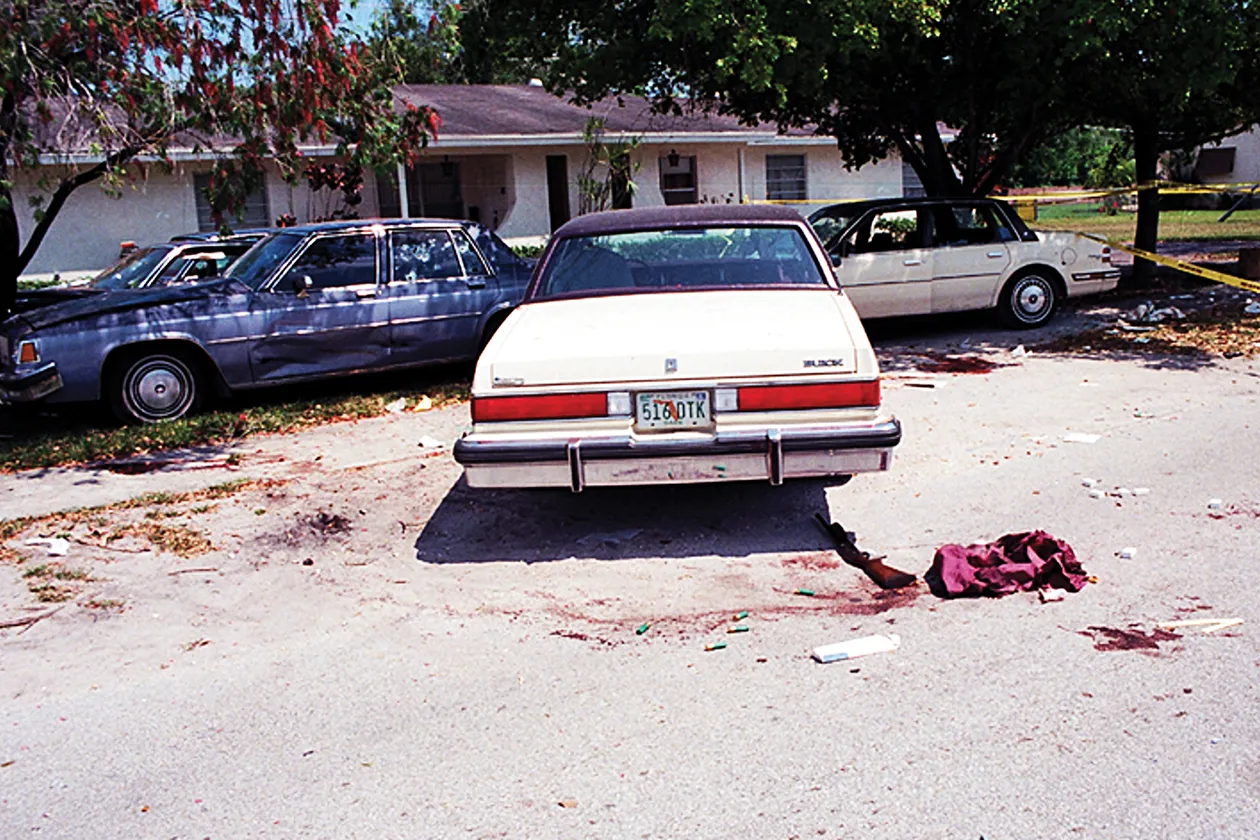
Whatever the true causes were, the subsequent media coverage played into the popular narrative that American police were outgunned by criminals. One suspect, Michael Platt, did most of the shooting using a Ruger Mini-14 with 30-round magazines. The FBI agents were equipped with revolvers, 9mm pistols, and shotguns.
The impact on law enforcement was immediate. At the time, police departments were gradually transitioning from revolvers to semi-automatic pistols. The Miami incident accelerated that trend.
Most departments chose 9mm pistols from Smith & Wesson, Sig Sauer, or Beretta. But that same year, there was a new option available.
Just a few months prior to the Miami shootout, the first Glock pistols appeared in American gun stores. Glock aggressively targeted the law enforcement market, offering attractive trade-in deals. Gaston Glock himself said in an interview, “we assumed that, by pursuing the law enforcement market, we would then receive the benefit of ‘after sales’ in the commercial market.”
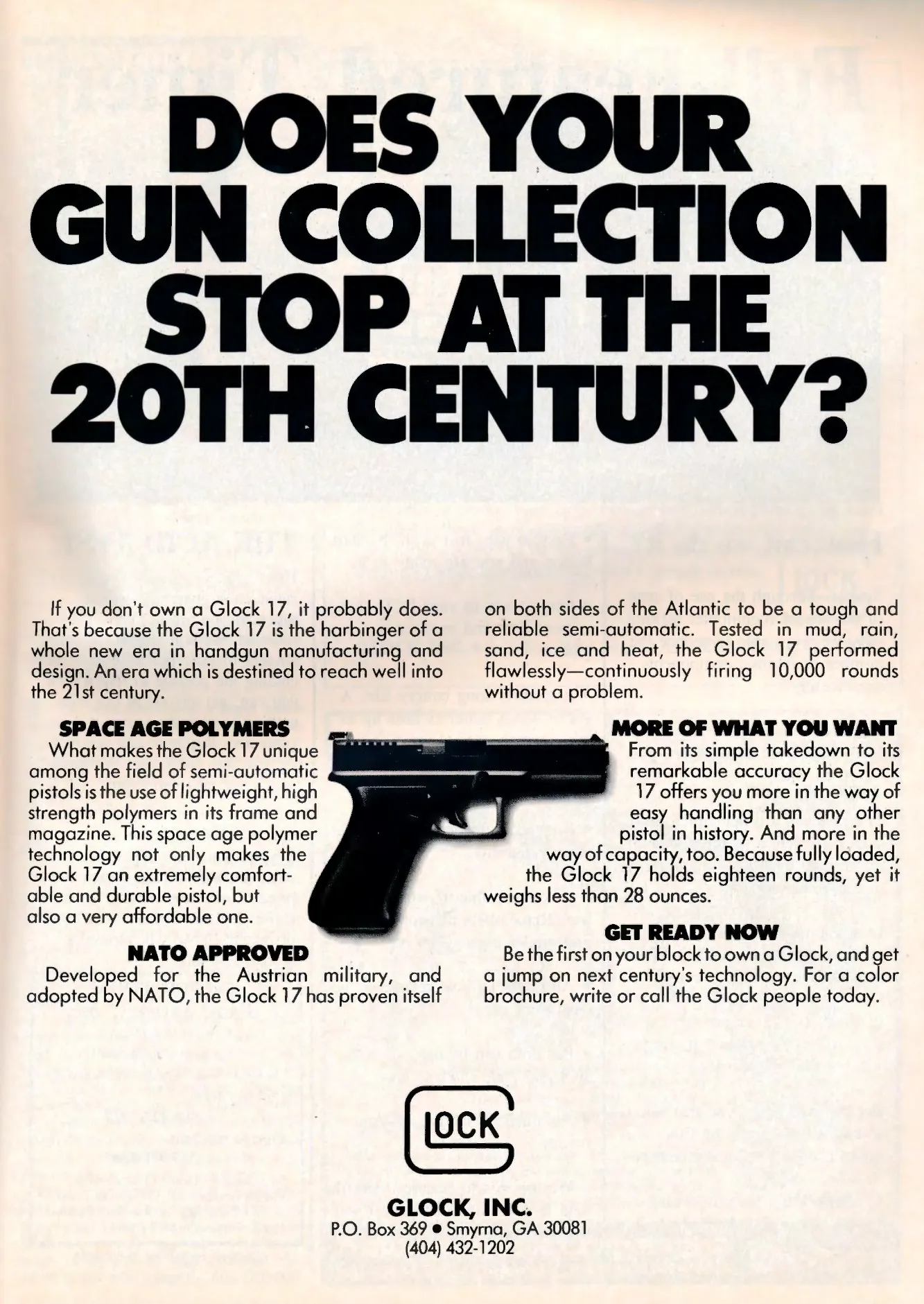
Glock offered their pistols to police at a steep discount – $300 each, $60 below the wholesale price. By the end of 1987, prominent police forces in Miami, Dallas, San Francisco, and Minneapolis were carrying Glocks.
1987: The FBI’s Response
The Miami incident forced the FBI to reexamine their weapons, ammunition, and training doctrine. It was clear they needed to transition to semi-automatics, but they struggled to decide on a specific model. Most agents carried .38 Special revolvers, while SWAT team members used the 15-shot 9mm Smith & Wesson 459.
Three of the eight agents in the Miami shootout were former SWAT members who still carried these 9mms. One of them, Jerry Dove, hit Michael Platt at the start of the gunfight. The bullet traveled through his arm and into the chest cavity, stopping an inch short of his heart. It was a serious wound but not enough to stop him immediately. Had the bullet penetrated deeper, Platt would not have gone on to kill and wound the other agents.
Prior to this discovery, popular wound ballistics doctrine emphasized bullet expansion over penetration. The FBI held a Wound Ballistics Workshop in 1987, assembling ballistics experts from across the country. They established new criteria for future ammo selection, including ballistic gelatin test protocols and a minimum penetration requirement of 10-12 inches.
The Centimeter
Whit Collins may have helped get the 10mm Auto off the ground, but he still preferred his original idea of a shorter .40 caliber cartridge with moderate velocity. The .40 G&A project resumed, this time aided by the ready availability of 10mm Auto brass, which was easier to modify than rifle cases. He discovered that with a simple barrel change, a shortened, reduced velocity 10mm Auto would function in any popular 9mm pistol. Collins renamed this new iteration of his .40 cartridge “Centimeter.”
Collins nearly convinced Pachmayr Gun Works to attempt commercial production of the Centimeter, but they ultimately decided the financial risk was too high. However, the manager of Pachmayr’s custom shop, Paul Liebenberg, was still a big believer in the cartridge. So when he opened his own custom gunsmithing business, Liebenberg offered Centimeter conversions for 1911 pistols.
That’s when the wildcat cartridge got some traction with high-level IPSC competitive shooters. The Centimeter was ideal for IPSC because it offered less recoil and greater ammo capacity than .45 ACP. While 9mm also had these advantages, the rules imposed a scoring penalty on less powerful cartridges. Centimeter had enough power to be scored the same as .45s.One big-name competitor who saw its potential was Tom Campbell, a close friend of Liebenberg and an employee at Smith & Wesson. If Campbell could convince Smith & Wesson to pursue Centimeter, it might be the big break Collins had been looking for.
Struggles at Smith & Wesson
Unfortunately, in the late 80s, Smith & Wesson was not in great shape as a company. The American gun market was having a rough time in general, but Smith & Wesson had fallen farther than most. Poor leadership and multiple ownership changes led to a major slip in quality control and resistance to new ideas… like a new competition-focused pistol cartridge.
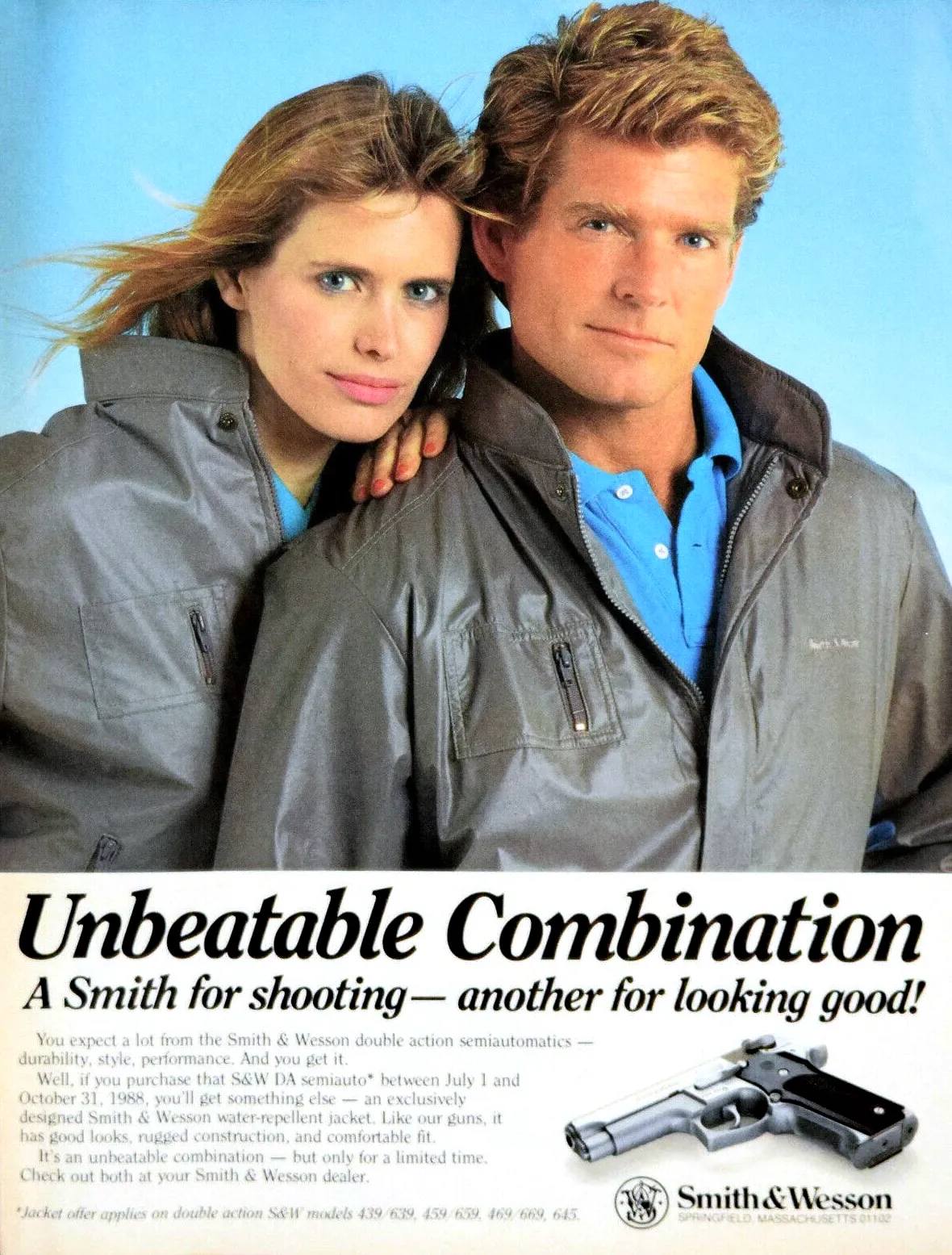
Smith had dominated the law enforcement pistol market for decades, but as cops transitioned to semi-autos, a lot of them were choosing European competitors over the old American favorite. At times, the company’s management seemed oblivious to the direction the industry was headed. For example, the rising threat of Glock was not taken seriously.
One former marketing executive summed up the general attitude with, “the gun’s uglier than a sack full of a–holes. Who’d want it? It’s plastic.”
1989: A New Cartridge for the Bureau
The FBI’s new ballistics research program started the tedious process of testing dozens of different 9mm and .45 ACP loads to find the best option for their duty ammo. Special Agent John Hall, the recently appointed chief of the Firearms Training Unit, added a third option to the testing: 10mm Auto. In the heated debate between 9 and 45, he thought 10mm might offer a compromise everyone could live with.
Right away, the ballistics lab observed that factory 10mm ammo was simply too powerful for a duty sidearm. Penetration far exceeded what was necessary and recoil was excessive. And they weren’t the first to notice this. Gun writers of the time had varying opinions on 10mm’s recoil, but even the most generous reviews admitted it was unpleasant after a few boxes of ammo. FBI recruits fire 5000 rounds in training during their first few weeks at the academy. Any veteran handgunner would be worn out by that amount of full-power 10mm, let alone a complete novice.
The FBI’s “10mm Lite”
So the FBI developed a custom 10mm load with reduced velocity: a 180-grain bullet at 950 feet per second. The recoil was on par with existing duty loads in other calibers, but it still had enough velocity to achieve superior penetration. When all of the testing was complete, the FBI’s so-called “10mm Lite” came out on top, though only slightly ahead of the .45 ACP loads.
Despite protests from some within the Firearms Training Unit, Hall recommended that the FBI adopt 10mm Auto. Publicly, Hall argued that 9mm and .45 ACP were old cartridges with no further development potential, while 10mm was new with lots of room to evolve. Privately, he admitted he couldn’t go before Congress to request funding for a .45 pistol just after the US armed forces had switched from .45 to 9mm.
Defaulting to Smith & Wesson
In 1989, the FBI officially declared that 10mm would be their new cartridge. But what gun would they choose to fire it? Their options were limited. Sig Sauer was an obvious choice. The Bureau had been issuing 9mm Sig P228s to new agents. The P220 in .45 ACP was also approved for agents who wanted to carry a personally owned weapon. Both guns were well-liked. The Bureau’s pistol instructors were partial to the Sig double action/single action and frame-mounted decocker. They had also proven to be reliable and durable.
A 10mm version of the P220 might have been just what the FBI was looking for. It’s rumored that they even asked Sig to make one, but Sig declined. The Bureau didn’t want a single action sidearm, so that ruled out the Colt Delta Elite (which might have been out of their budget anyway.)
Instead, they turned to Smith & Wesson. The FBI had first-hand experience with Smith & Wesson’s declining quality control. But the pressure to field a new pistol won out over any concerns about Smith’s capabilities. They were the only company left with both the capacity to fill a big pistol contract and an existing large-frame model that could handle 10mm.
The FBI ultimately settled on a modified hybrid of existing Smith & Wesson .45 models. It had a stainless steel full size frame and a midsize 4 ¼-inch barrel. Smith & Wesson removed their slide-mounted safety-decocker and installed their own version of Sig’s frame-mounted decocking lever. The Model 1076 was born and the FBI signed a contract for 9500 pistols.
1990: The Birth of .40 S&W
Behind the scenes, Smith & Wesson had a lot more going on than just the FBI contract. At the 1990 SHOT Show in Las Vegas, they unveiled the new .40 Smith & Wesson cartridge. But it wasn’t marketed as a competition round like team Centimeter had been hoping for.
When rumors spread that the FBI was planning to adopt a down-loaded version of 10mm, Smith & Wesson’s leadership saw an opportunity. A 180-grain bullet at 950 feet per second was a perfect fit for a shorter .40 caliber cartridge like the Centimeter. They figured when police departments found they could get a cartridge with the same ballistics as the FBI’s, but in a 9mm-sized pistol, they’d line up to buy it. Smith & Wesson saw this as their chance to reclaim a dominant position in the law enforcement market.
They worked in secret with Winchester to refine Centimeter into a .40 caliber cartridge optimized for the Smith & Wesson 5900 series pistols. After a few short months, they had the cartridge ready in time to display at SHOT Show alongside the new 4006 pistol.
Glock Sneaks Ahead
Meanwhile, Glock was also making waves at SHOT Show. The FBI’s adoption of 10mm was expected to increase demand for the cartridge, so Glock came up with their own large-frame 10mm pistol – the Glock 20.
To mark the occasion, Gaston Glock himself made the trip from Austria for his very first appearance at the convention. At the time, Glock was known by name in the industry, but not many people actually knew what he looked like. So nobody noticed the unassuming Austrian who visited the S&W display booth. And apparently, he also avoided notice when he pocketed a handful of the sample .40 Smith & Wesson cartridges.
Later, upon examining the rounds, Glock saw that the .40 could be fired from a Glock 17 with little more than a barrel change. His company started production almost immediately. The .40 caliber Glock 22 hit store shelves before Smith & Wesson could ramp up full production and ship their Model 4006.
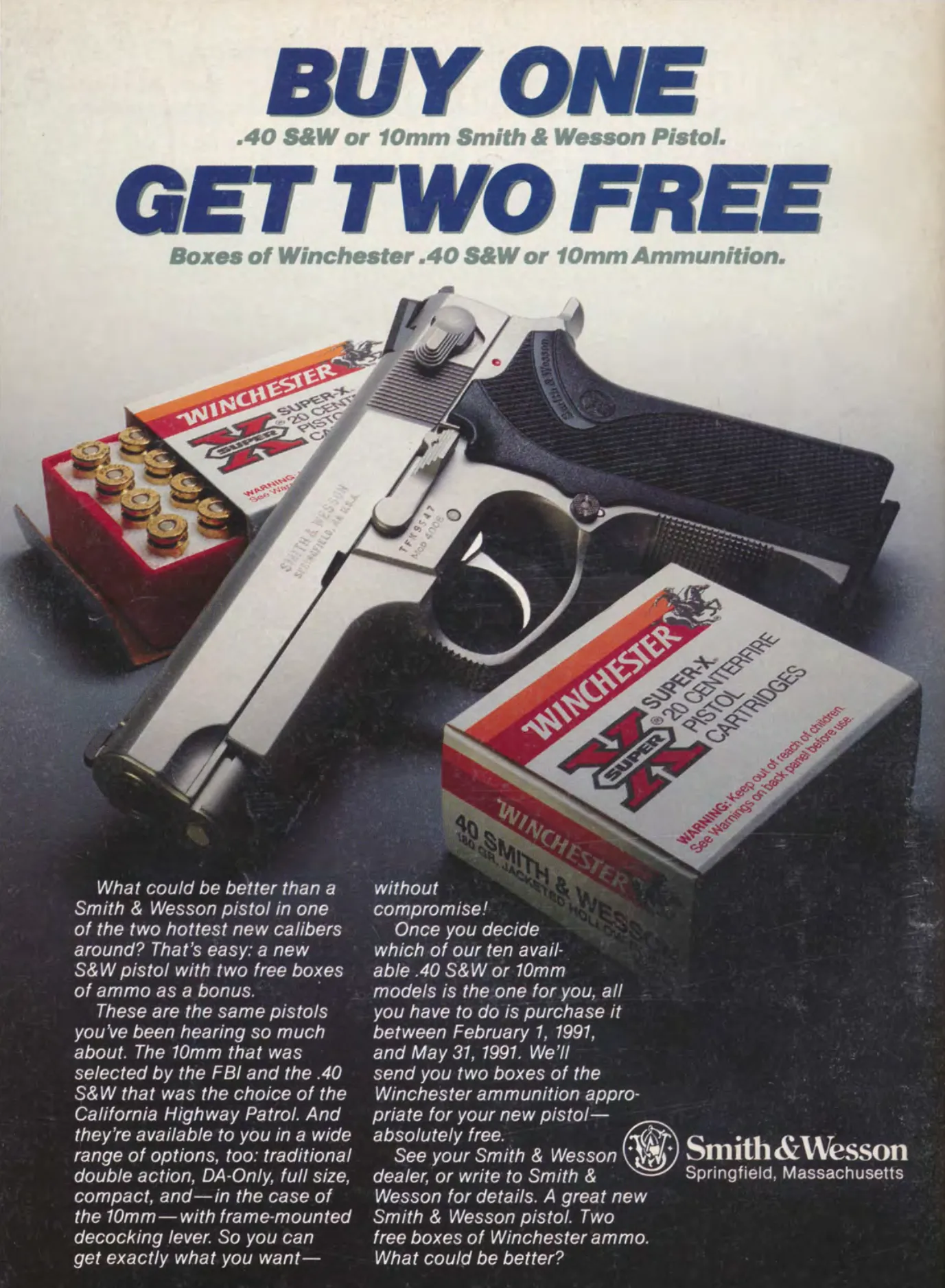
Glock beat Smith & Wesson to market with Smith’s own cartridge. The 4006 was only about a week behind, so it likely didn’t have a major impact on Smith & Wesson’s immediate sales figures. But it was a huge embarrassment and proof that they were going to pay for underestimating the Austrian upstart.
Problems at the FBI
The FBI also had good reason to be embarrassed. They were receiving their first shipments of brand new 10mm pistols, which were now obsolete with the debut of the .40 S&W cartridge. To make matters worse, the guns had problems. Some of them worked fine, but others had severe mechanical defects and had to be returned. In several instances, agents had their 1076 slides get stuck in the closed position, which could only be opened by banging them with a mallet.
Field agents seemed to like the 1076 for the most part, but others complained about its size and weight. The gun that was supposed to be a compromise solution turned out to be a major source of controversy from the beginning.
A Closer Look at the S&W 1076
It really doesn’t seem like a bad pistol, it’s just a bad duty pistol. The third gen Smith & Wesson semi-autos are generally reliable and well-engineered. The trigger is decent for a double action/single action. It’s got a slim grip with 9-round single stack magazines. The FBI also requested 11 and 15-round extended mags.
It is heavy. Loaded, it weighs 46 ounces, which is a bit more than a 1911. The balance is odd. It feels kind of awkward and front-heavy at first. But you get used to that. It’s not something I notice when I’m actually shooting it.
The range ammo I used is a 180-grain FMJ that measured just under 1100 feet per second. That’s lower velocity than the factory ammo that was common in the 80s, but a little hotter than the FBI’s “10mm Lite”. The recoil is comparable to a .45 1911. There’s plenty of muzzle rise, but it’s not uncomfortable to shoot.
Just from running a couple of magazines through the 1076, I’d have a hard time believing the old myth that FBI agents couldn’t handle the recoil of this gun.
Not a One-Size-Fits-All Pistol
The grip is long from front to back and it’s got a long trigger reach. This would be tough to use for someone with smaller hands. Even I can’t reach the slide release with my thumb without shifting my grip. That’s something I rarely have an issue with on other pistols. The grip is just way too big for a gun that has to fit 10,000 agents with a wide variety of hand sizes.
The decocker feels kind of clunky compared to the rest of the pistol. It’s possible this was the root cause of at least some of the mechanical problems the FBI had. Smith & Wesson tried to fix the issues but it was a slow process. And the FBI kept finding new things to complain about. It’s not really clear if the problems were ever completely solved. Either way, the FBI had buyer’s remorse and might have been looking for any excuse they could find to get out of the contract.
1993: New Lows for Smith
Smith & Wesson continued to lose ground to Glock in the handgun market. Not only was Glock selling more pistols, they were making a lot more money on each sale. Their polymer frames were so much cheaper to manufacture that Glock was making 65% profit on every gun. The profit margins for Smith & Wesson, Sig, and Beretta semi-autos were closer to 5-20%.
In a desperate Hail Mary, Smith & Wesson resorted to outright copying Glock. The S&W Sigma, designed in 1993, was so similar to a Glock that some parts were interchangeable. Glock sued, forcing Smith & Wesson into a multi-million dollar settlement. They made some changes to the Sigma’s design, but it didn’t matter. The Sigma’s reputation as a second-rate knock-off was already well established.
The FBI Abandons 10mm
And then they lost the FBI contract. After a lot of back and forth over repairs, Smith & Wesson and the Bureau decided to part ways in 1993. The number of 10mm pistols ultimately delivered came to 2400 – a quarter of the original request of 9500. Some agents kept using their 1076s until the late 90s, but the majority of the pistols were sent to the Bureau’s gun vault in Quantico and replaced with Sig P228s.
Did the FBI exaggerate the mechanical defects with the 1076 to get out of the contract? It’s possible. .40 S&W was clearly the cartridge they actually wanted. Continuing to spend money on the 10mm didn’t make sense practically or financially. It’s not clear why Smith & Wesson didn’t simply offer to work with the Bureau on a .40 caliber pistol instead. Between the management problems at Smith and the layers of bureaucracy at the FBI, there are probably a lot of reasons common sense was in short supply. In any case, both organizations had problems, and neither was offering any solutions to the other.
Aftermath
It wasn’t until 1997 that the FBI corrected the mistake they made in 1990. After a long and meticulous by-the-book selection process, they chose the .40 caliber Glock 22 and 23 as their official agency-wide sidearm. But the Bureau was a little late to the game on this one. By the mid 90s, the Glock 22 was already riding cop’s holsters in several major cities across the country. The FBI’s choice might have helped sell even more Glocks, but they weren’t exactly the trendsetters they had planned to be in the wake of the Miami Shootout.
The .40 caliber Glock turned out to be the pistol of the future the FBI had been looking for when they hastily adopted a 10mm Smith back in 1990. From the mid 90s until the mid 2010s, the Glock 22 was as ubiquitous in law enforcement as Smith & Wesson .38 Special revolvers were in the 70s and 80s.
Of course, nothing lasts forever. .40’s popularity has taken a nosedive in recent years. 9mm is now the heavy favorite. 10mm Auto has returned from near death and seems to gain new fans every year. Smith & Wesson managed to bounce back and today their M&P pistol is one of several polymer framed models offering serious competition for Glock in the law enforcement market. But Glock is still doing okay too. Just ask the FBI, where they now carry 9mm Glock 17s and 19s.
